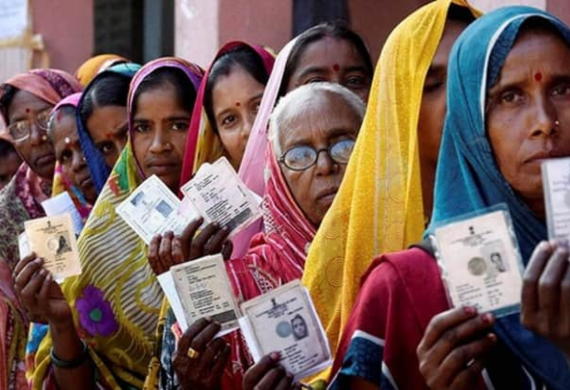
Women outnumber male voters in three divisions in the Dharwad district
By: WE Staff | Wednesday, 12 April 2023
In three assembly districts in the Dharwad district, more women than men vote. In the seats of Hubballi-Dharwad East (Reserved), Hubballi-Dharwad Central, and Hubballi-Dharwad West, there are more female voters than male voters.
There are 1,03,226 male voters in Hubballi-Dharwad East(Reserved), but 1,04,199 female voters. There are 1,21,872 male voters and 1,23,952 female voters in Hubballi-Dharwad Central. There are 1,28,085 male voters and 1,31,736 female voters in Hubballi-Dharwad West.
Out of a total of 15,07,414 voters in the district, 757422 are men and 749807 are women. Transgender people make up 85%. The list has 259825 names, with Hubballi-Dharwad having the most. Hubballi-Dharwad central is next, with 2,45,862, followed by Dharwad (Rural), 2,11,341, Hubballi-Dharwad East, 2,07,439, Navalgund, 2,05,377, Kalaghatagi, 1,92,621, and Kundgol, with 1,84,949.
The district's total number of voters climbed from 14.48 lakh in 2018 to 15.07 lakh. A total of 2.04 lakh people lived in Navalgund, 1.87 lakh in Kundgol, 2.07 lakh in Dharwad (Rural), 1.94 lakh in Hubballi-Dharwad East, 2.42 lakh in Hubballi-Dharwad Central, 2.55 lakh in Hubballi-Dharwad West, and 1.89 lakh in Kalghtagi.
In terms of voter turnout, Kalaghatagi topped the list with 80.08 percent of the vote, Kundgol was second with 78.67 percent, Navalgund was third with 78.19%, Dharwad Rural was at 75.10 percent, Hubballi-Dharwad West was at 70.08%, Hubballi-Dharwad West was at 617 percent, and Hubballi-Dharwad Central was at 60.85%.
According to statistics, rural voters were more excited about exercising their right to vote than their urban counterparts, who remained uninterested. According to a study of voter participation in past elections, informed citizens who frequently critique the work of politicians and elected officials have shown little interest in exercising their constitutional rights. Except Kundgol, all seats have seen a rise in voter registration since the Election Commission began its SVEEP initiatives.
It will now be interesting to observe if the female voters, who have shown more interest in having their names added to the voter list, would exhibit the same zeal while going to the polls and exercising their right to vote.


.jpg)



